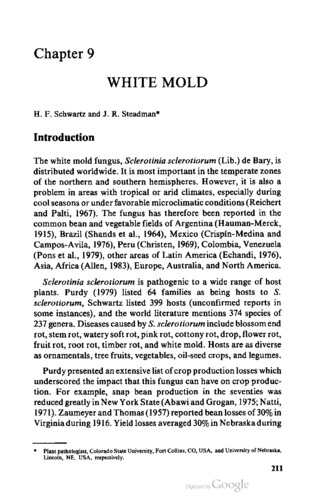Book Chapter
White mold
White mold, caused by the fungus Sclerotinia (Whetzelinia) sclerotiorum, is distributed worldwide and has more than 300 hosts. It infects flowers, cotyledons, seeds, leaves, or injured plant tissue. The disease can be controlled by crop rotation, flooding, reduced seeding rates, fewer irrigations, and destruction of bean- cull screenings containing sclerotia. Other control measures include chemical products in the middle of the flowering period, modifying plant architecture, and using resistant var. Many soil microorganisms are associated with sclerotia and may cause them to degrade or fail to germinate. The symptoms and damage caused by the disease are illustrated in color. (CIAT)

